Affiliate links on Android Authority may earn us a commission. Learn more.
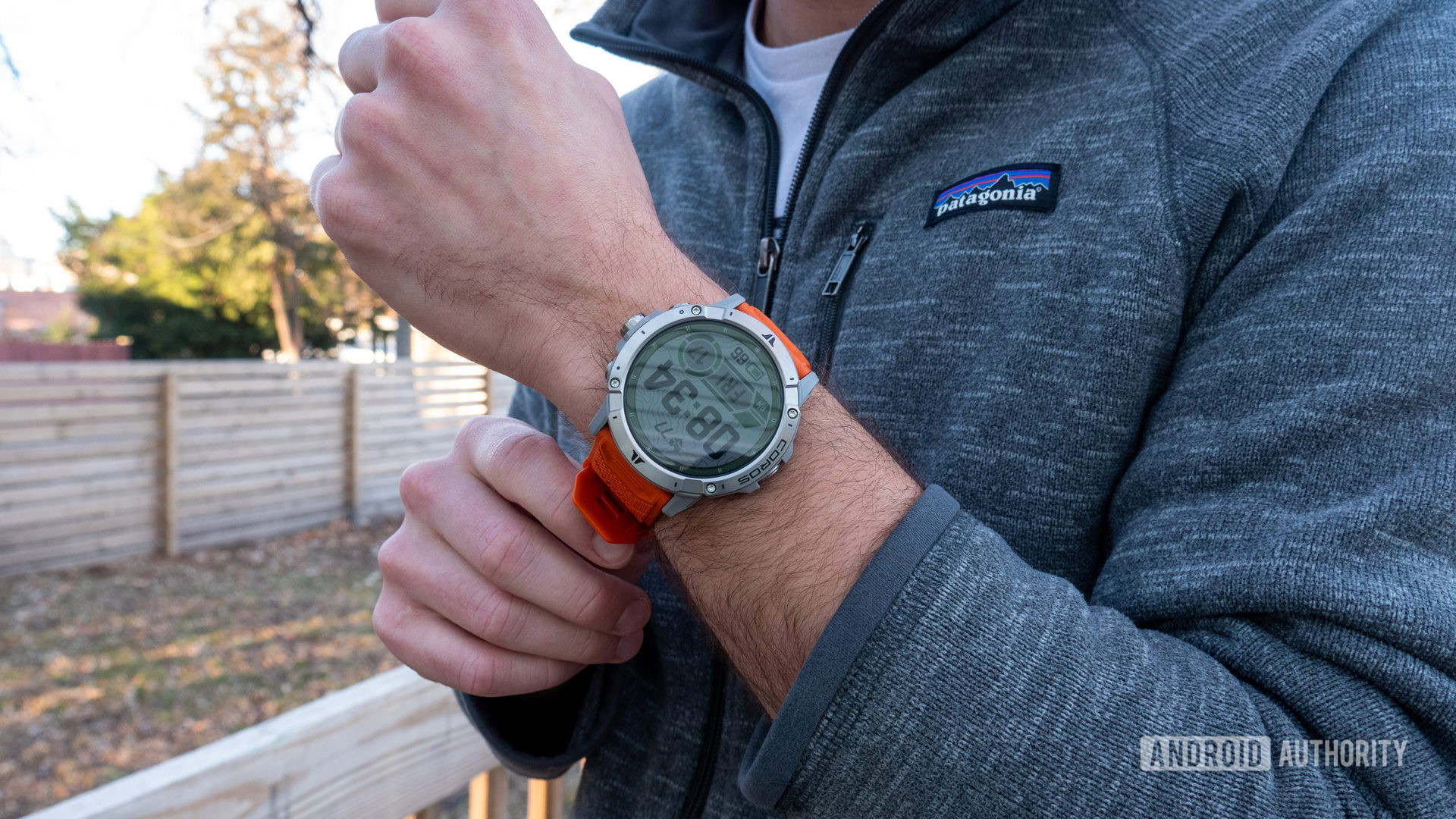
Coros Vertix 2
MSRP:
What we like
What we don't like
Coros Vertix 2
Coros is going head to head with Garmin’s highest-end fitness watch lineup. Offering 60-day battery life and first-of-its-kind GPS tracking features, the new Coros Vertix 2 is the company’s way of telling the world there’s an alternative to the Garmin Fenix line and Suunto 9 series. I actually think Coros succeeds in many ways, surpassing the competition in ways I didn’t think were possible. But there are some unfortunate downsides to the new watch, which some athletes might have a hard time looking past. Read all about it in our Coros Vertix 2 review.
What you need to know about the Coros Vertix 2
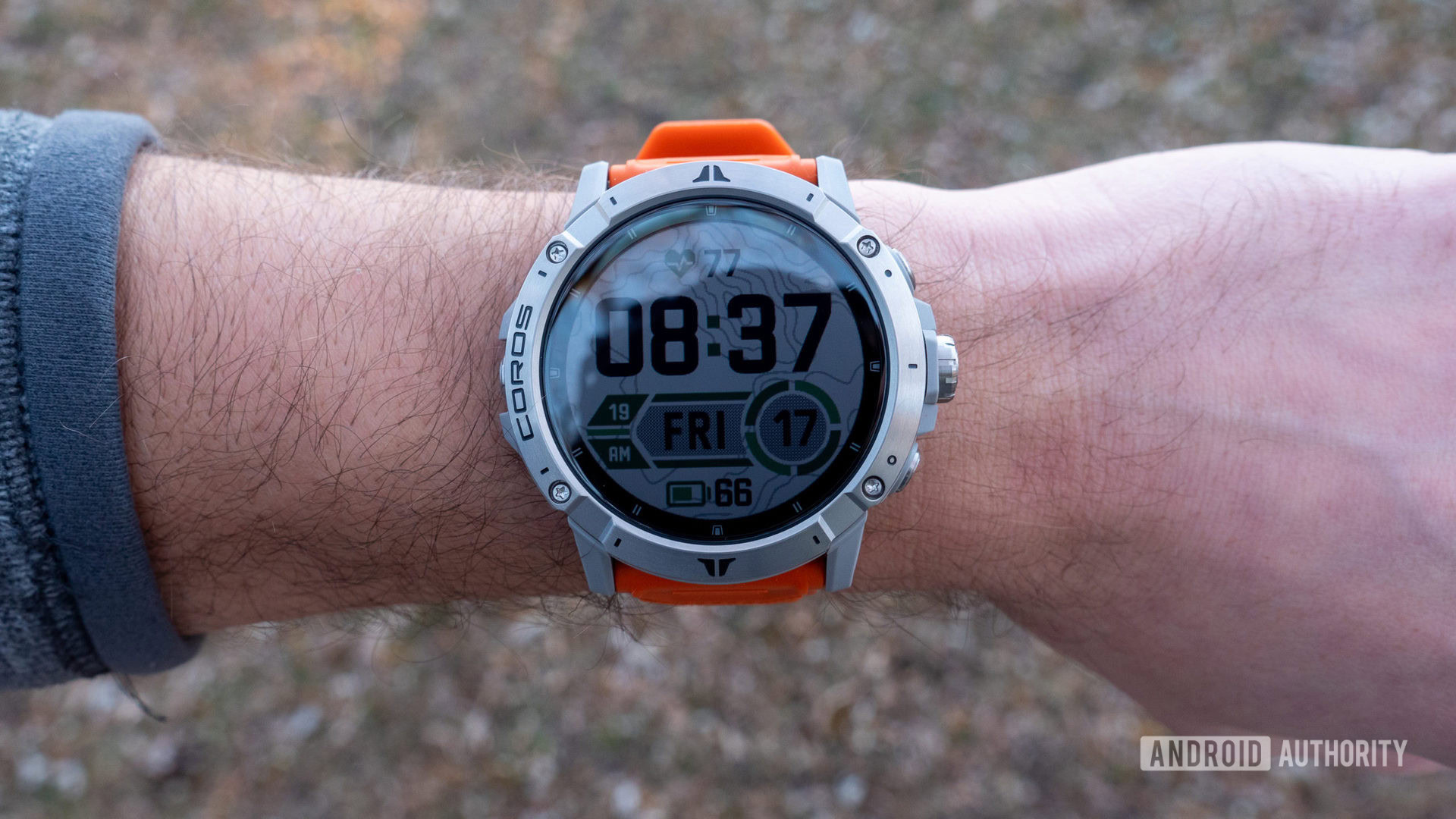
- Coros Vertix 2: $699 / €699.99 / £599 / $949 CA / $1,149 AU / $1,239 NZ
The Coros Vertix 2 is a high-end fitness watch for adventurers and athletes that want minimal compromises with their wearable. It’s a big, no-nonsense watch that offers essentially every feature Coros has ever put into a wearable, and then some.
In our eyes, the Vertix 2 has three main selling points. Dual-frequency satellite communication means the Vertix 2 can talk to all five major navigational systems at the same time — a first for any fitness watch. Support for global offline mapping means no matter where you are in the world, you’ll be able to pull up a map of your region to follow a route. The Vertix 2 can also last an astounding 60 days on a single charge, no solar power required.
On top of that, it has basic smartwatch features, support for onboard music storage (though no streaming service support), the biggest display ever seen on a Coros wearable, and Wi-Fi support for software updates.
The Coros Vertix 2 is available from Coros.com, SportsShoes.com, and (at times) Amazon starting at $699. It’s available in two colorways — Obsidian and Lava — with five additional strap colors: Coral, Grey, Yellow, Black, and Green Navy.
How’s the design?
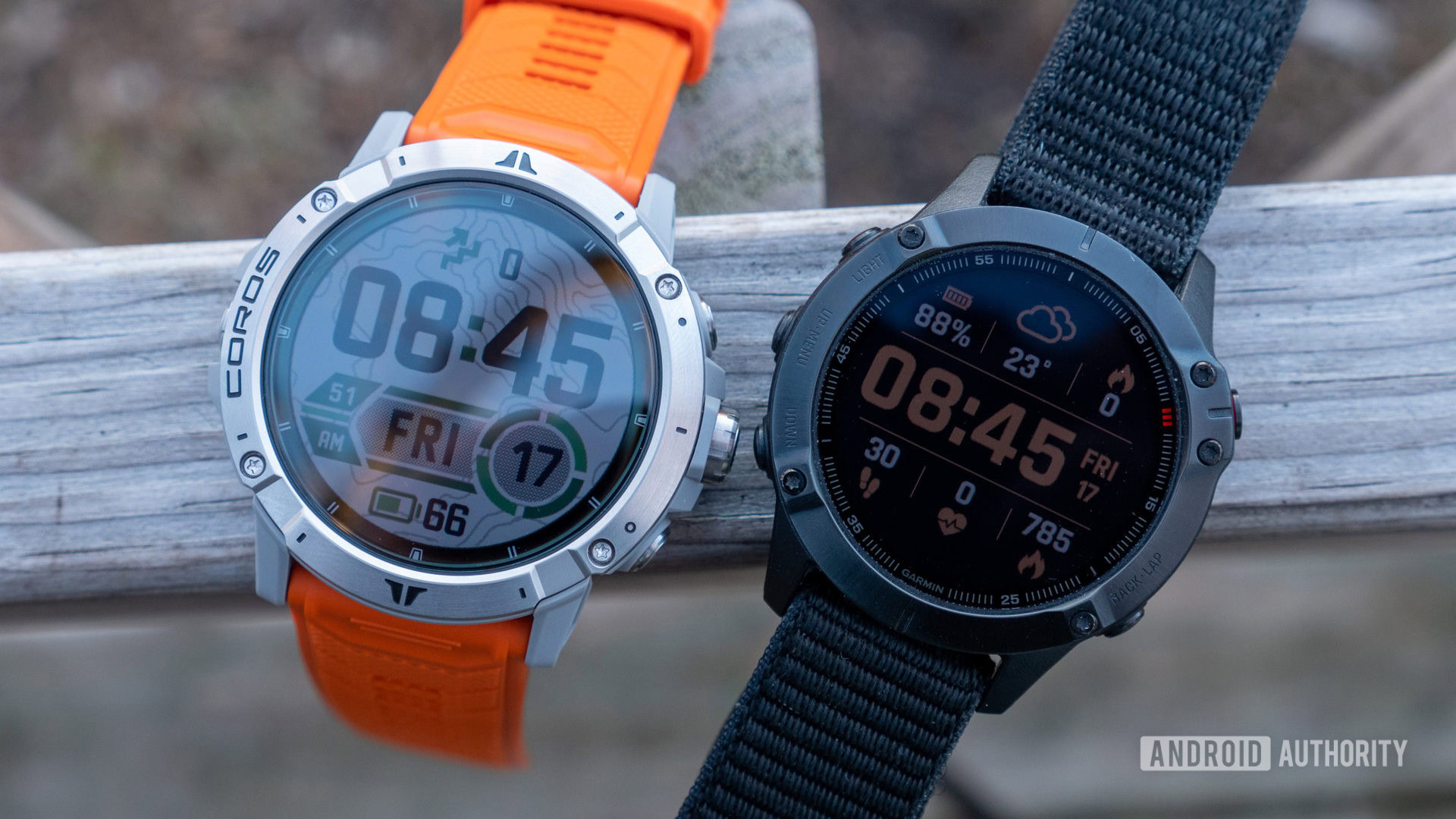
The Coros Vertix 2 is built like a tank. It’s made of titanium and has a sapphire glass lens, making it one of the most durable fitness watches you can buy. It’s light on the wrist, too, which is surprising considering its massive size. However, it is slightly heavier than its predecessor.
Speaking of which, the Vertix 2 only comes in one 50mm size, which dwarfs most wrists. If you have average-sized wrists like me, you should seriously consider how often you’ll want to wear a watch of this size every day. I would have liked to see Coros offer two models — one for large wrists and one for smaller ones — like Garmin does with its Fenix series.
The Vertix 2 is a big, well-built sports watch.
Back to the positives. The silicone straps that ship with the Vertix 2 are comfortable and don’t carry a lot of dust. Coros also cribbed Garmin’s QuickFit mechanism to make swapping straps extremely easy. Hey, I’m not complaining.
The 1.4-inch display offers a 16% higher resolution compared to the original Vertix. It’s a decent display, though it can look washed out on certain screens — particularly when it’s trying to show bright colors. I’m giving Coros points here because it’s easy to read outdoors in direct sunlight, where it really counts.
How long can the battery last?
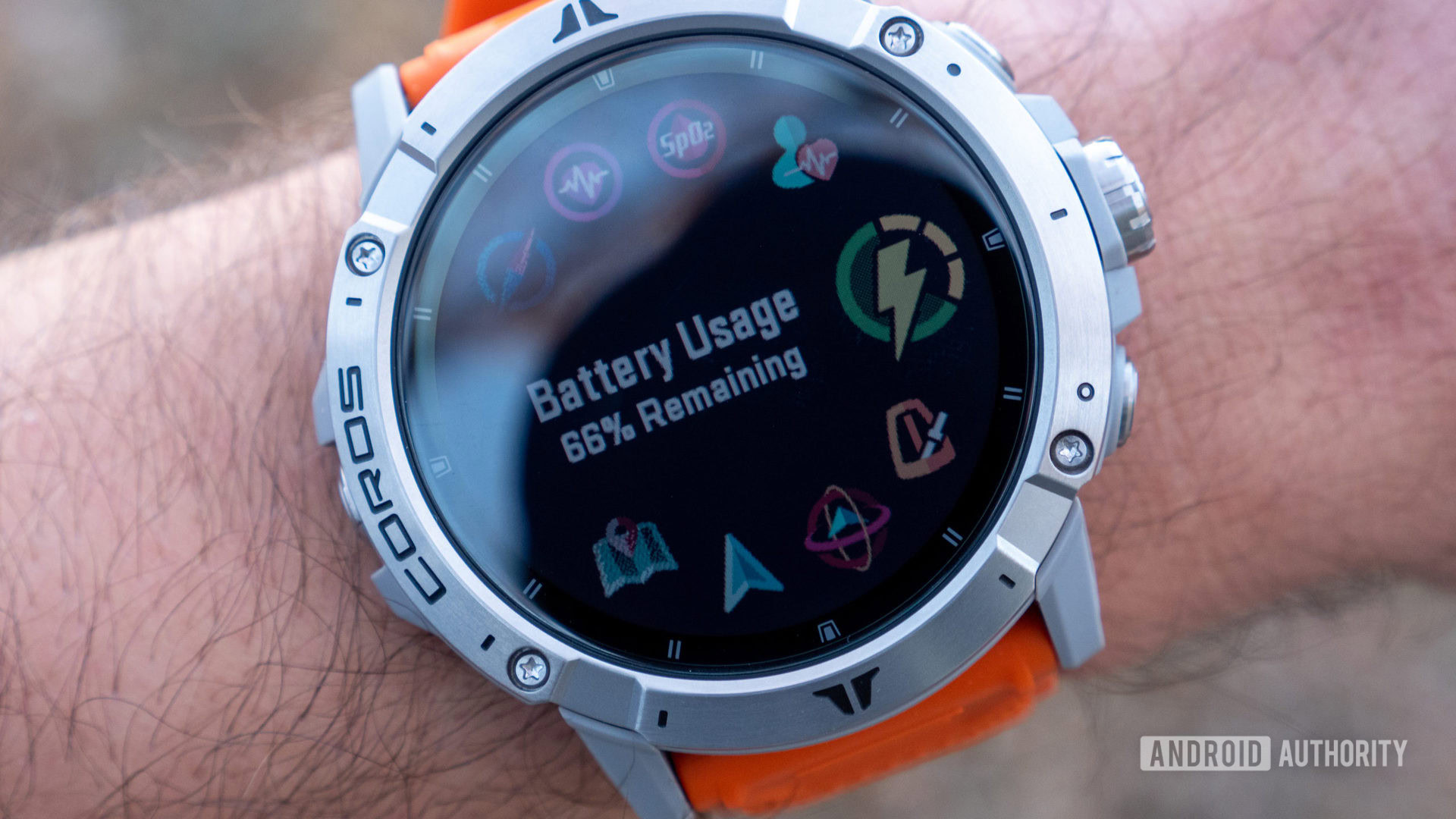
Battery life is one of the Vertix 2’s main selling points, and it does not disappoint. With 60 days of “standard use” or ~90 straight hours with all navigational systems turned on, the Vertix 2 offers the best battery life you’ll get on a non-solar-powered fitness watch. Here I am, writing this paragraph after a week of intense testing, and the Vertix 2 is sitting at 75%. Battery life is just something you don’t need to worry about.
The Coros Vertix 2 offers the best battery life you can get on a non-solar fitness watch.
For clarity, here’s what the Coros Vertix 2 is capable of in terms of battery life:
- Daily (standard) use: 60 days
- Standard use w/ GPS (GPS/QZSS): 140 hours
- Standard use w/ GPS + music: 35 hours
- All systems on (GPS/QZSS+GLONASS+Galileo+BeiDou): 90 hours
- All systems on + music: 30 hours
- All systems + dual-frequency on: 50 hours
- UltraMax: 240 hours
What about offline maps, dual-GNSS, and overall accuracy?
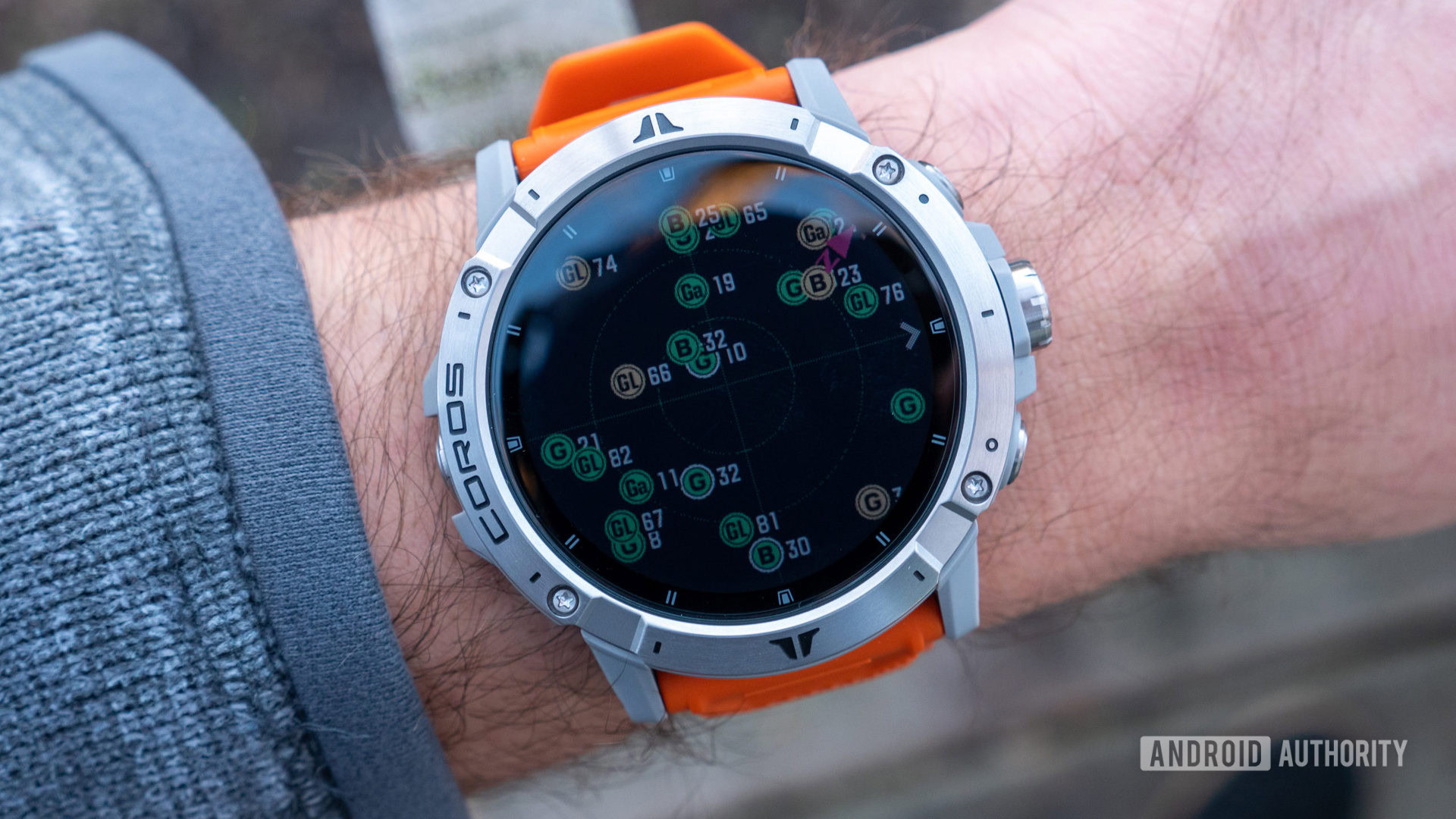
The Vertix 2’s dual-frequency GNSS chipset allows the watch to access all major satellite systems — GPS, GLONASS, Beidou, QZSS, and Galileo — at the same time. This, in theory, should make it the most accurate outdoor navigation watch, as it can access significantly more satellites at one time than any other watch. You can see this first-hand by opening the Satellite Signal app, which shows all of the closest satellites to your location and which ones your watch is connected to. Very, very cool.
Accessing all of the major satellite systems means the Vertix 2 should provide greater accuracy in heavily forested areas, areas surrounded by tall buildings, and on the side of mountains.
In practice, I’ve found the Coros Vertix 2 to be more accurate than competing devices in terms of overall location accuracy. Throughout the review period, I tested the Vertix 2 with dual-GNSS turned on at all times. Below are some examples of a ~4.5-mile run with the Vertix 2, Apple Watch Series 6, and Garmin Venu 2.
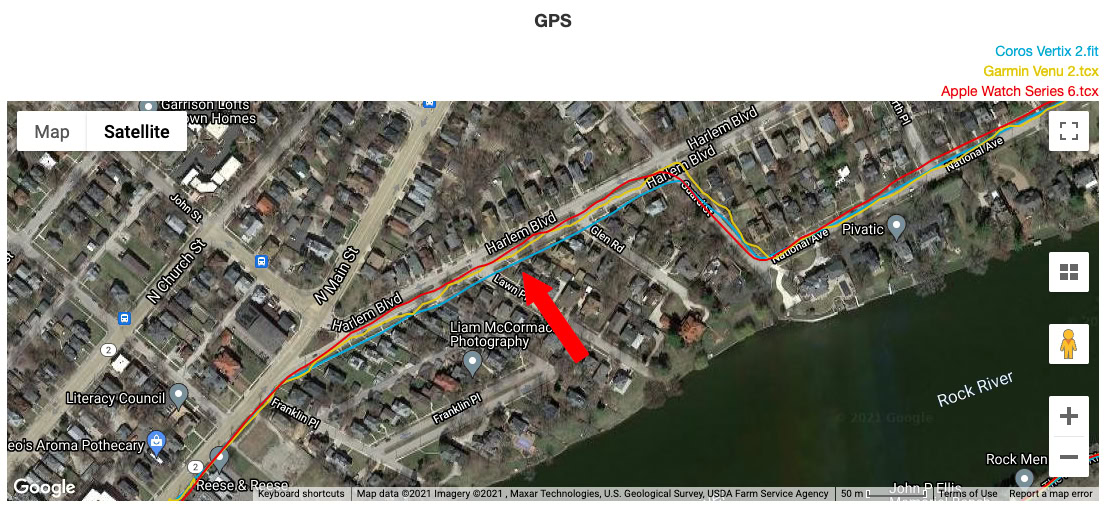
It’s a small thing, but in the screenshot above, the Vertix 2 was the only device out of the three to actually put me on the sidewalk for this entire stretch of road. I always run on the sidewalk on this part of my route, and just about every other device misses the mark. Kudos!
The Vertix 2 was also able to not entirely freak out under bridges. Below, you can see the Vertix 2 stayed straight while the Apple Watch and Garmin… did not.
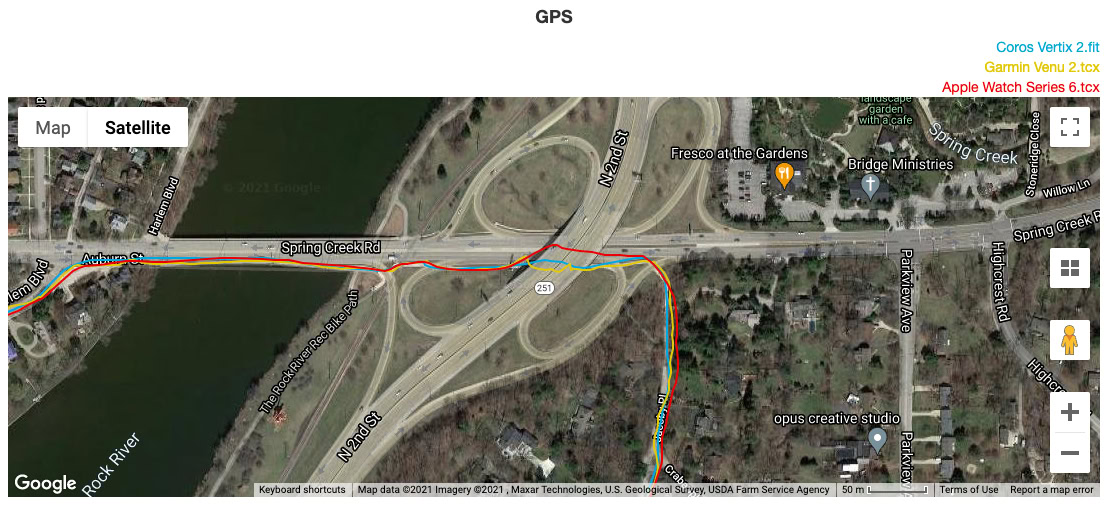
Next up is a particularly difficult area for any GPS running watch. The part of the course you see below has heavy tree coverage and a fair amount of twists and turns. Again, the Coros watch stuck to the path well almost the entire time. It wasn’t perfect, but it was far better than my other two watches.
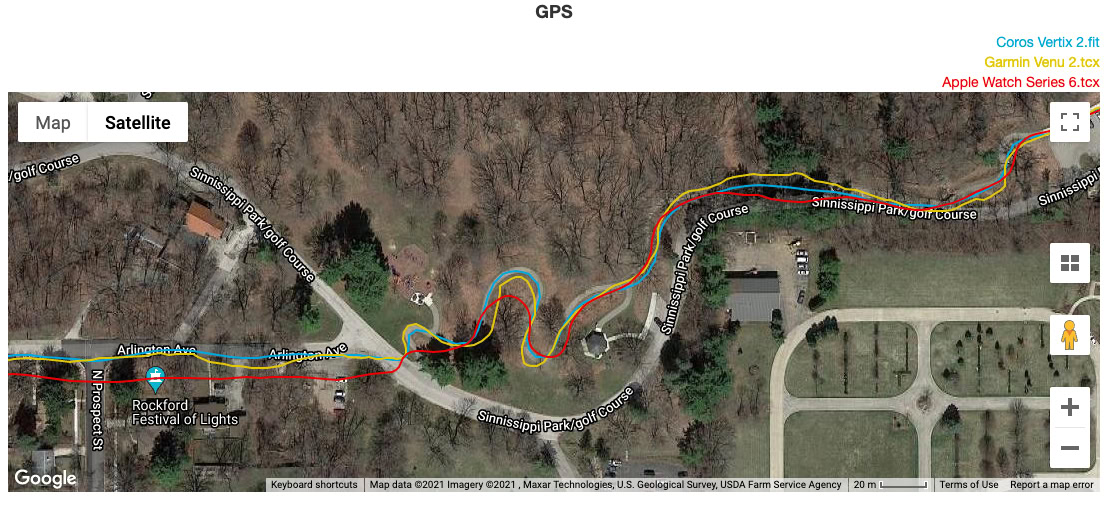
The Coros Vetix 2 isn’t always accurate. In the screenshot below, the Apple Watch stuck more closely to my path than the Vertix 2. Again, this was an area of heavy tree coverage, making it a particularly challenging area for any watch, but Apple’s wearable came out on top for this stretch.
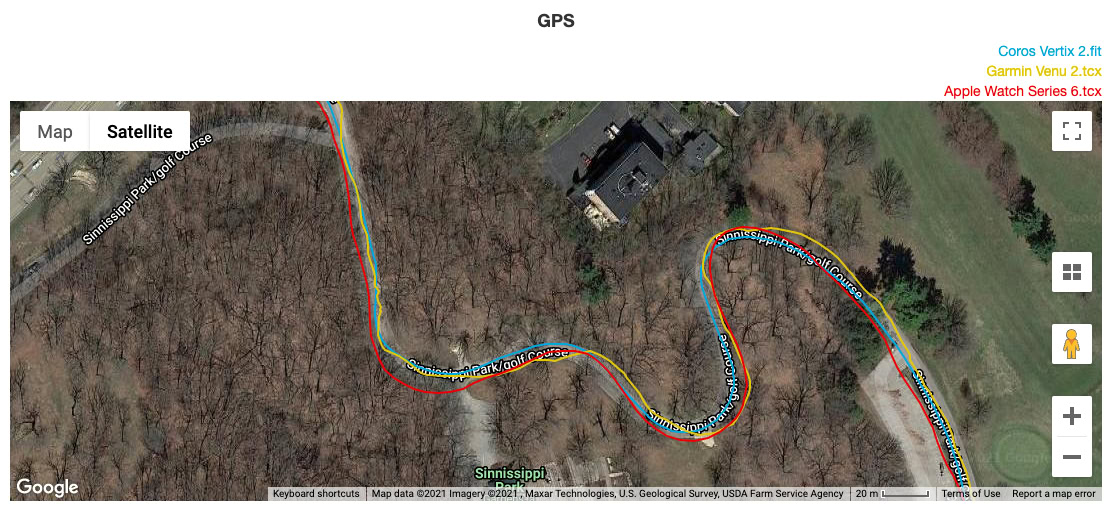
The Coros Vertix 2 is one of the only fitness watches to support global offline mapping, making this one of the most enticing wearables for those who rarely hike, bike, or run in the same place more than once. Offline maps are offered in landscape, topo, and hybrid modes. I’ve been using the hybrid mode for the majority of my testing.
To be clear, only global landscape maps are pre-loaded on the Vertix 2. You need to download region-specific topo maps from Coros.com and transfer them manually via a USB cable. It’s not the easiest process, but it works.
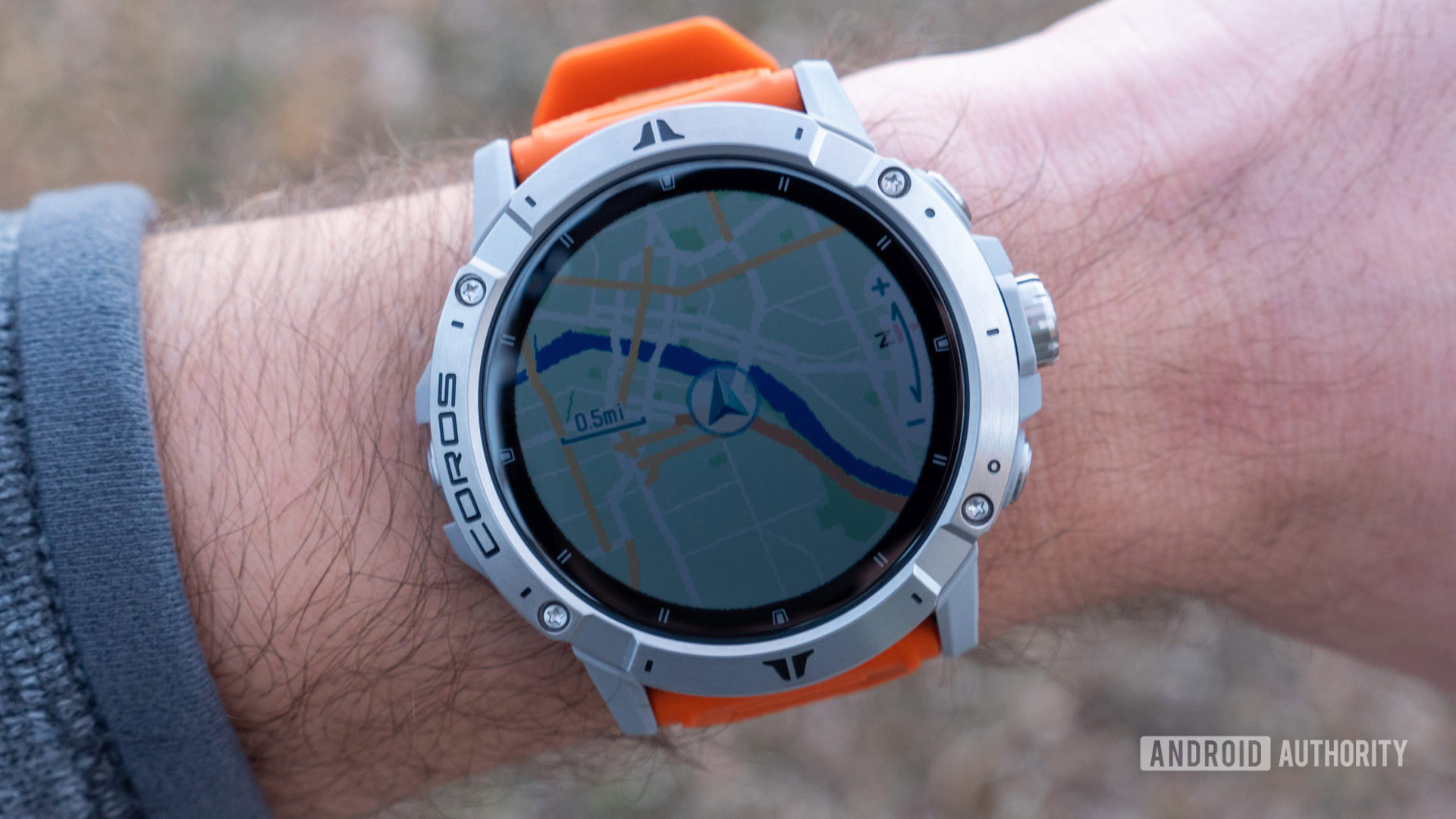
First, the positives. Opening up a map of your region on your watch can be a bit slow, but navigating around the interface is extremely easy. The Vertix 2’s touchscreen kicks in (more on this later) so you can move around the map freely. The touchscreen is very responsive. You can also zoom in/out with the rotatable crown.
Unfortunately, you can’t navigate with the Vertix 2’s mapping data. You’ll primarily use the maps for breadcrumb navigation. The watch can help you follow a course and tell you if you veer off, but it won’t tell you exactly where to go on a trail. It’s not as advanced as other forms of navigation on competitor watches.
There are also no labels of any kind on Coros’ offline maps: no street names, no landmark or river names, and no trail names. This alone could be a big caveat for some users.
How’s the new heart rate sensor?
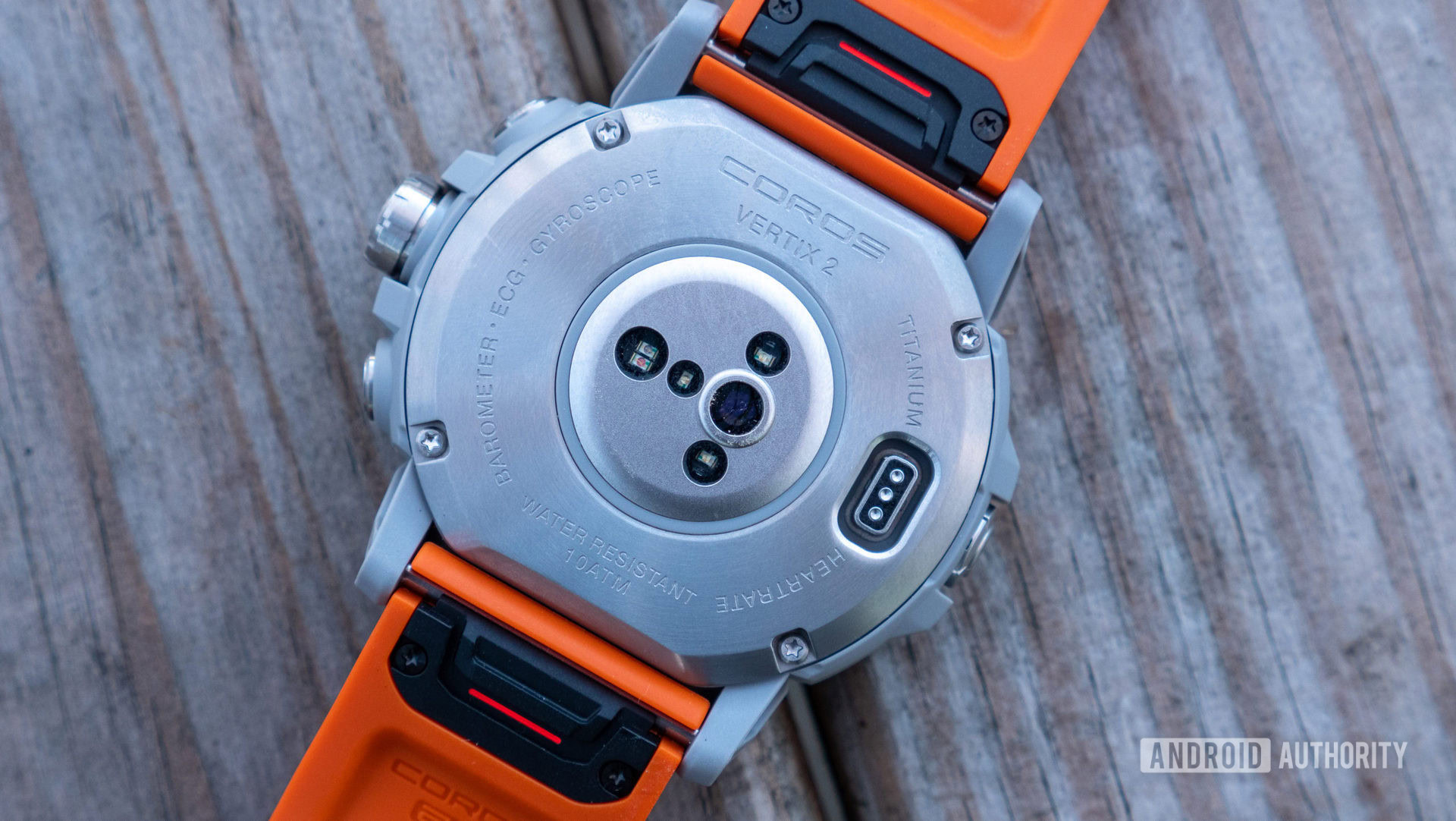
The Coros Vertix 2 is seriously great in many areas most other wearables fall apart. However, the watch has some unfortunate downsides you should know about.
As hinted at earlier, the Vertix 2’s new optical heart rate sensor is not as reliable as I had hoped. It’s not inconsistent at all times, but enough so that I wouldn’t strap this on my wrist if I’m trying to get the most accurate heart rate data during a HIIT session or interval run.
Even during the most accurate sessions overall, the Vertix 2 still fell behind competitors like the Garmin Fenix 6 Pro and Apple Watch Series 6. See below for a 50-minute indoor cycling workout compared to the Apple Watch Series 6 and Polar H10 chest strap.

In this workout, the Coros Veritx 2 strayed a bit from the Apple Watch and Polar H10, and also had difficulties keeping up in the beginning. There were three main points of inaccuracy from the Vertix 2, two of which are pointed out by the red arrows.
Not all workouts were this accurate, however. Sometimes, the Vertix 2’s heart rate sensor just wouldn’t cooperate at all. Below, you can see a 4.5-mile outdoor run with the Vertix 2, Apple Watch Series 6, and Polar H10 chest strap. It’s like the Coros watch was on a different wavelength the entire time.

I’ve noticed this issue with a few of my workouts over the last couple of weeks. The Vertix 2 would get “stuck” in a higher heart rate zone and fail to recognize that my heart rate is not, in fact, sitting at 160bpm+ for 30 minutes. During the time in the higher heart rate zone, it would follow the general peaks and valleys reported by my chest strap and other wearables. It’d just be, you know, 20bpm off the entire time.
This happened numerous times during intense yoga sessions, outdoor runs, and bike rides. My theory is that the Vertix 2 is having more trouble in colder environments than other wearables I’ve tested.
We’re hoping some of these heart rate issues are fixed over time with software updates. It’s entirely possible to tweak algorithms after the fact, but one concern remains: the Vertix 2 has a different heart rate sensor than the original Vertix. It’s no longer a Sony sensor, though Coros is staying quiet on revealing who makes the Vertix 2’s sensor.
Also read: The best heart rate monitors you can buy
You can still pair external heart rate sensors to the Vertix 2 if you don’t want to gamble with your data. You’ll just have to make sure your accessory is Bluetooth Smart-enabled since Coros deliberately removed ANT+ support from the Vertix 2. If you’re a cyclist and use an ANT+ bike trainer, you’ll want to look elsewhere.
Still on the subject of heart rate, Coros claims the Vertix 2 has an ECG. However, this isn’t the same medically certified ECG you’d find on an Apple Watch or Withings ScanWatch. The ECG sensor is only used to record a quick heart rate variability (HRV) value.
It’s deceptive. When most people think ECG, they think of a full ECG recording they can share with their doctor. In actuality, it’s just an app on the watch called “HRV test.” After sitting still for a minute and recording what looks like an ECG, the watch will only give you an HRV index reading for that minute of time. The actual ECG data is nowhere to be found. Granted, an ECG sensor is a fine way to record HRV data.
Again, the ECG monitor isn’t medically certified (hence the lack of ECG data post-test). Coros says it’s not pursuing a medical certification for the sensor, so HRV is all it’ll ever be able to do.
Anything else?
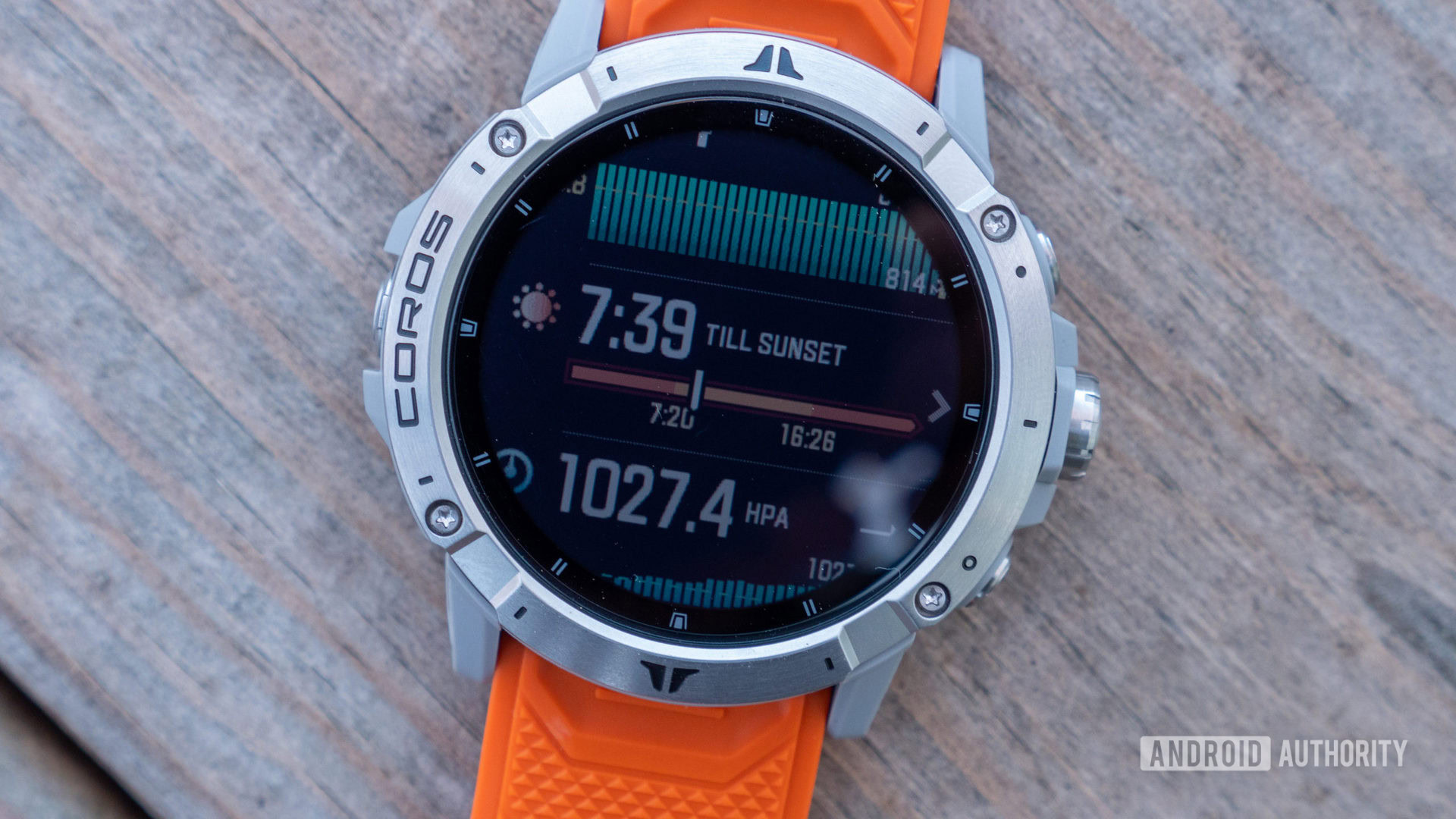
- 32GB of storage: The Vertix 2 has 32GB of onboard storage for music. It’s not compatible with any music-streaming services, unfortunately, but 32GB is plenty of room to store a few of your favorite albums or playlists for offline listening. Speaking of which, the Bluetooth connection between the Vertix 2 and my Pixel Buds A-Series has been solid throughout the testing period.
- Blood oxygen sensor: The Vertix 2 has an SpO2 sensor for recording on-demand blood oxygen readings. The sensor has not received FDA or CE clearance, so it should not be treated as a medical device. However, SpO2 readings have been spot-on with my Fenix 6 Pro and Withings ScanWatch.
- Coros app: For me, the Coros app leaves a lot to be desired. Navigating away from the home tab makes for a jarring experience. Tap on any metric from your day — be it heart rate, sleep, even something as simple as steps — and you’re thrust into landscape view, whether you have it enabled on your phone or not. There’s no digging through data in portrait mode.
- Action cam control: You can control your GoPro 9, 10, Insta360 One X2, or Insta360 One R with the Vertix 2. I don’t own an action camera, so I was unable to test out this feature. However, other reviewers say it works reliably.
- Running power on the wrist: Running power has become an important metric in training for runners. Usually, you’d need a separate accessory like a Stryd pod or NURVV Run insoles to track it, but Coros integrated it natively onto the Vertix 2.
- Touchscreen (sort of): The Vertix 2 has a touchscreen display. Oddly, it’s not enabled for all parts of the operating system. It’s quite handy when you’re moving around on a map or controlling music playback, but you’ll have to rely on the rotatable crown to scroll through menus and widgets. Touching the screen simply doesn’t do anything when you’re on the home screen or in the settings menu. And, there’s no indication as to which screens support the touchscreen. It’s like reliving Apple’s Force Touch guessing game all over again.
- Confusing on-device software: The on-device software on the Verix 2 can be difficult to figure out. Clicking the crown button lets you choose from all the different workouts offered by the watch, but Coros also throws in sections to view your previous workouts, training plans, or jump into system settings. Those non-workout functions seem out of place here. Pull up the Toolbox (long-press the bottom button), and you’ll see a scrollable list of pretty much everything else: apps, quick settings, watch functions like SpO2 and HRV tests, maps and navigation, and again, an option to jump into the system settings. It all just seems a little sloppy.
- Rotatable crown: Much of the navigation around the software takes place using the rotatable side button. I don’t love using it. Scrolling through widgets is pretty slow. Physically rotating the crown is nowhere near the level of quality you’d expect from a $700 watch — it pales in comparison to Apple’s Digital Crown. Also, the crown protrudes out a bit too much for my liking. On multiple occasions, I’ve accidentally unlocked the device using my wrist (and consequently started a workout), even with the long-press to unlock function enabled.
- Smartwatch features: On the subject of software, you don’t buy a Coros watch for its smartwatch features. Besides basic smartphone notifications, onboard music, and the paltry selection of watch faces, the Vertix 2’s focus is on fitness, not smart functionality.
- No REM sleep tracking: The Coros Vertix 2 does not track REM sleep, which is an increasingly important metric to track in terms of memory, mood, and overall restfulness.
Coros Vertix 2 specs
| Coros Vertix 2 | |
|---|---|
Display | 1.4-inch always-on memory LCD 280 x 280 resolution |
Dimensions and weight | 50.3 x 50.3 x 15.7mm 89g Strap: 26mm quick fit band |
Build materials | Lens: Sapphire glass Bezel: Grade 5 titanium alloy with PVD coating Cover: Titanium alloy with PVD coating Strap: Silicone / nylon |
Battery | Daily (standard) use: 60 days Standard use w/ GPS (GPS/QZSS): 140 hours Standard use w/ GPS + music: 35 hours All systems on (GPS/QZSS+GLONASS+Galileo+BeiDou): 90 hours All systems on + music: 30 hours All systems + dual-frequency on: 50 hours UltraMax: 240 hours Charging time: >2 hours |
IP rating | 10ATM |
Sensors | All-satellite dual-frequency GNSS chipset GPS, QZSS, GLONASS, Galileo, BeiDou Optical pulse oximeter Optical heart rate sensor Electrocardiogram sensor Barometric altimeter Accelerometer Compass Gyroscope Thermometer |
Connectivity | Bluetooth 5.0 Wi-Fi |
Storage | 32GB |
Compatibility | Android, iOS |
Smartwatch features | Smartphone notifications Onboard music support for offline streaming Do not disturb mode First-party watch faces |
Value and competition
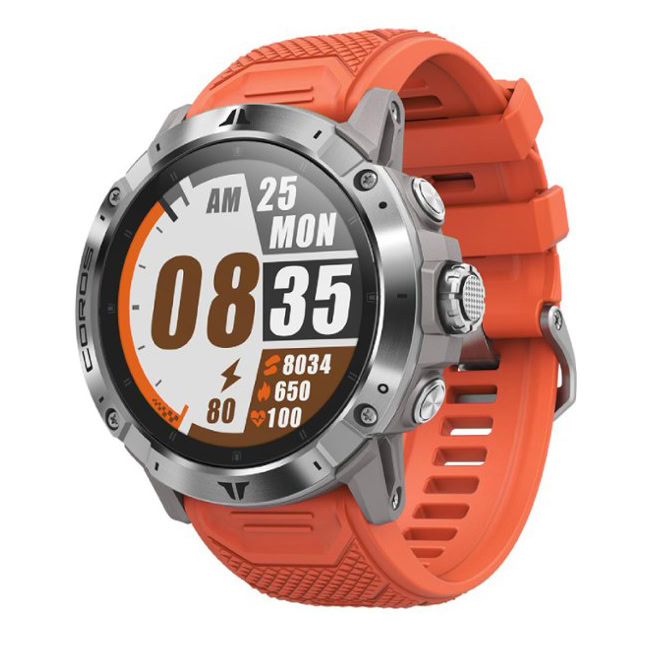
The Coros Vertix 2 is a premium fitness watch and is priced as such. It’s available for $700 and has yet to see a price drop since its debut.
Coros’ biggest competition is Garmin’s Fenix 6 series of outdoor watches. Specifically, the Fenix 6X Pro offers offline mapping, three weeks of battery life, and overall solid heart rate and GPS accuracy. Normally available for $700, it’s on sale during the holidays for $200 off, bringing the price down to just $500.
You can spend a few bucks more than the Vertix 2 and upgrade your pick to the Fenix 6X Pro Solar, which has all the same features in addition to solar charging, significantly increasing the battery life.
The Suunto 9 series also shouldn’t be overlooked. Available in two sizes, the Suunto 9 Peak (small) and 9 Baro (large) offer better-than-average battery life and onboard music. They are notably missing offline mapping, though. These devices are also much cheaper than the Vertix 2.
Coros Vertix 2 review: Should I buy it?
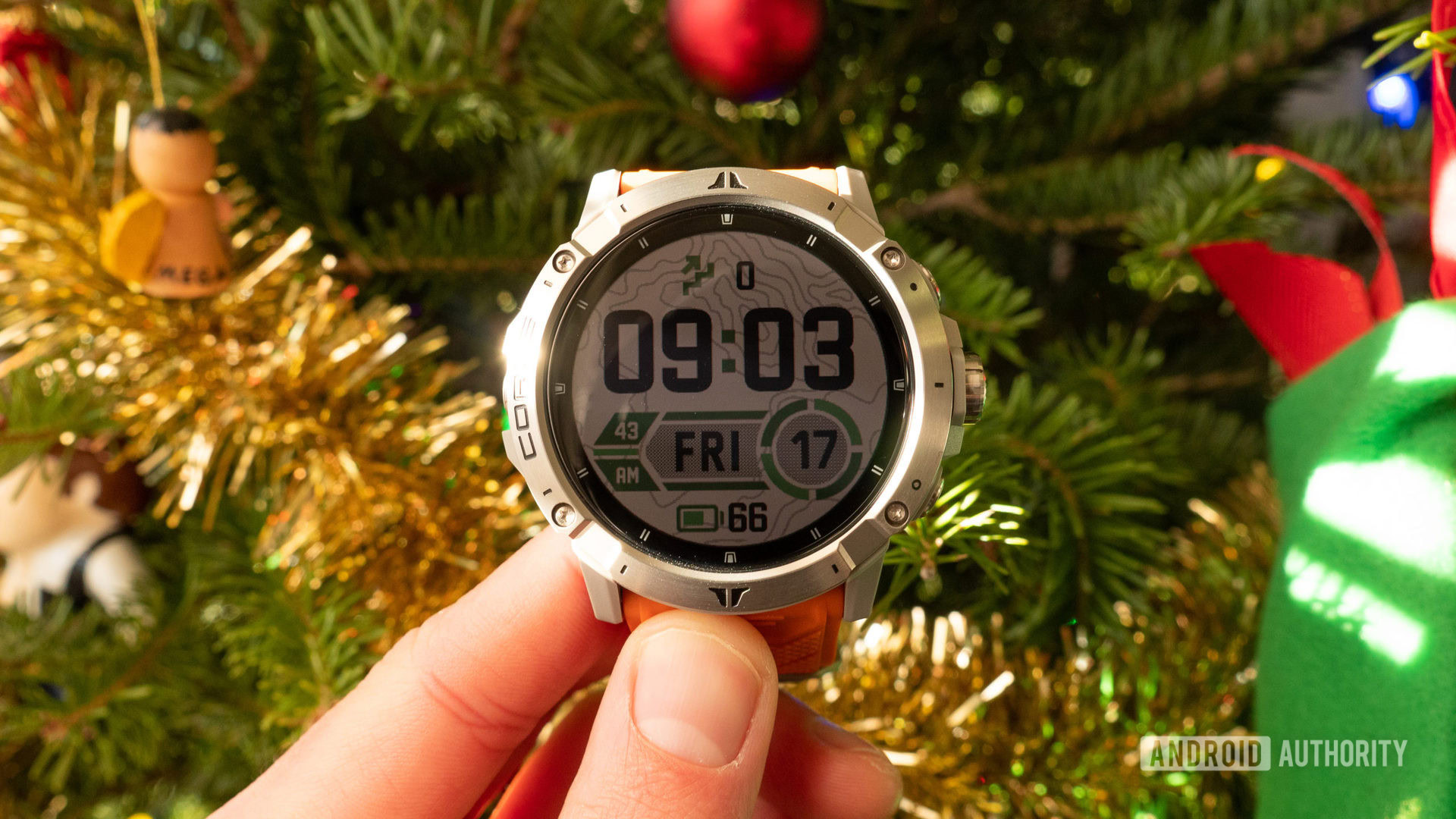
The Coros Vertix 2 is a fine wearable for the adventurers among us, but unfortunately, it doesn’t stick the landing on all of its most important features. The heart rate monitor needs to be dialed in, and while global offline mapping is nice to have, the navigation features are quite basic and could use some more detail. These will no doubt sway some would-be buyers from choosing the Vertix 2 over Garmin’s Fenix line.
But you won’t get two-month-long battery life with Garmin’s adventure watches (not counting the Instinct series). Not having to worry about battery life really at all is a great feeling. Plus, I do think Coros’ dual-GNSS feature provides better accuracy overall than the competition. If you’re in the market for something that’ll keep track of your location accurately and reliably, the Vertix 2 is a great option for you.
It's hard to think of a buyer that would be satisfied with 100% of what the Coros Vertix 2 offers.
The $700 asking price is quite high, though, especially considering competing watches start at around $550 (and even less during the holidays). Those hoping Coros would go the Pace 2 route and offer something that competed in terms of features and price are out of luck.
The Coros Vertix 2 will satisfy some buyers but will let others down. If battery life and GPS accuracy are important to you, the Vertix 2 won’t steer you wrong. But if overall value, heart rate monitoring, or multiple size options are what you’re after, check out what Garmin or Suunto have to offer.